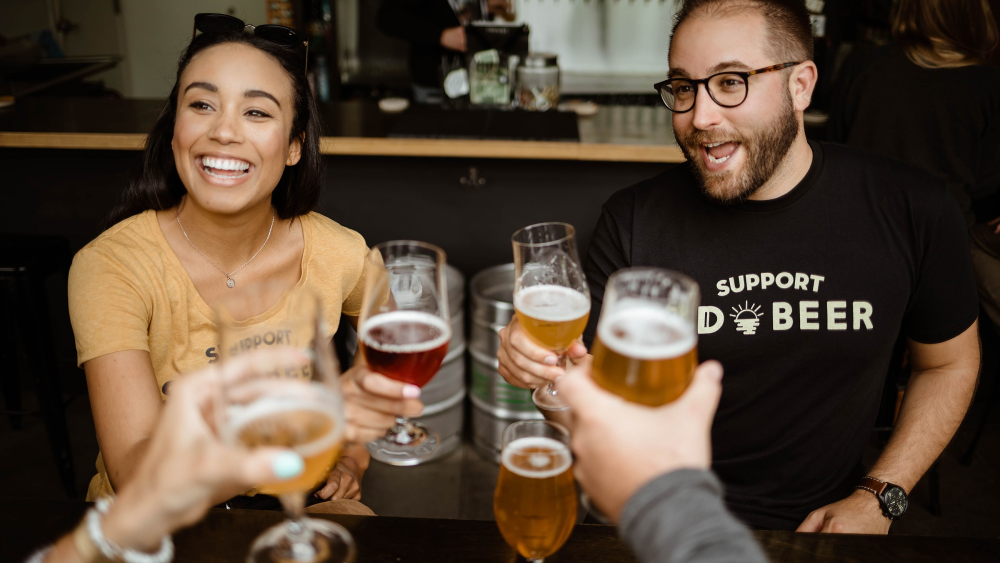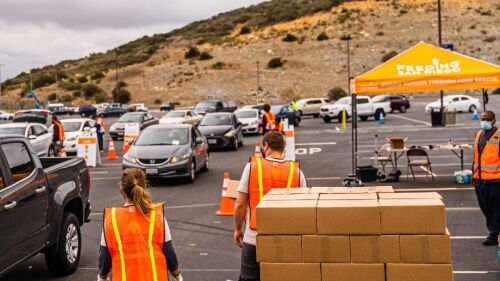The craft beer industry has been ingrained in San Diego’s culture and economy for 25+ years, with many of the country’s top-producing craft brewing companies hailing from America’s Finest City. With that growth, comes change. With that change, local breweries continue to stand out and propel the industry, keeping SD firmly on the map as the Capital of Craft.
We’re tapping into the local craft beer scene in 2024 by asking Erik Fowler, executive director of the San Diego Brewers Guild (SDBG) 11 questions — let’s go, round by round.
Q: As of January 2024, how many small, independent breweries are part of the San Diego Brewers Guild?
A: We’re currently going through membership renewals, but right now we have 95 brewery members. This includes main-production breweries and does not account for breweries with additional taprooms.
Q: Share three words to describe the state of San Diego’s craft beer industry right now.
A: Iconic. Innovative. Mature.
Q: Which San Diego neighborhoods are showing the most growth right now, in terms of new breweries or nurturing existing ones?
A: For North County, I’d say Vista. South Bay has done a lot to nurture their craft beer scene, and I think that’s worth calling out. Miramar is always really solid. There’s some turnover with those facilities but places like Fall Brewing — they’re revitalizing the big production spaces up there. Miramar embodies the manufacturing side of what beer is in San Diego.

Teams from seven local brewers came together to create the specialty beer at the Capital of Craft Brew Day on Oct. 13, 2023.
Photo via San Diego Brewers Guild
Q: What’s the outlook for SDBG’s biggest events this year, including Guild Fest and San Diego Beer Week?
A: I want to give some context here. The local beer industry — and nationally as well — has gone through a large maturation. It’s very healthy for industries to do that; we saw 10 years of extreme growth. We’re finally seeing a kind of plateau, and there is some decrease in volumes for some large breweries.
The guild had been in a honeymoon phase of the craft beer industry. A lot of these outward-facing initiatives had been formed — like Guild Fest and San Diego Beer Week. And I hope we can get back to that. Beer Week is something we’re really going to double-down on this year and I feel confident that it’s going to be pretty exciting.
But some of these capital-intensive things like Guild Fest, we’re looking at ways to scale it back and make it a little bit more reasonable, and less risk to our organization.
I kind of pushed that off the plate when I came into this role in September [2023]. We’re not focusing on our members right now and we’re worried about throwing this beer festival — it seems backwards. We need to worry about our breweries first and we need to resolidify that, and we have in the last 6-8 months.
We used the last quarter to look at what initiatives matter to our members and will use 2024 as a way to look inwards first. Community is a big theme we’re using. Community of breweries. Community of the individuals who work at the breweries. Community of beer drinkers.
We’re looking at supporting our breweries more directly first and then once we rebuild that we can look at, ‘OK, do they need promotion like they did five years ago?’
We’re pivoting a little bit to use this year to really help breweries with their business operations and provide a lot of education and seminars and our yearly craft beer conference to give breweries the tools they need to succeed.
Ideally, we would look at doing smaller, quarterly festivals and teaming up with local breweries to do it. More small, regional events throughout the county.

Beer Week 2023 was scaled down to refocus the guild on its members and smaller events.
Photo via San Diego Brewers Guild
Q: San Diego has long been known as the Capital of Craft. How do you think the city and local breweries have grown into that title?
A: We’ve been very fortunate that we’ve had breweries that have grown into large, regional breweries and they’ve been able to nurture really good talent. Stone was called ‘Stepping Stone’ in the industry for a long time. It really allowed people to learn different parts of the business very quickly.
We’ve often thought how cool it would be to have a [family] tree of Pizza Port, Stone, Ballast — to see how many other breweries have opened and spider-webbed from those. There’s quite a bit from each of those, and that’s been a big, pivotal role.
Having breweries that have gone national or multi-state has lent a lot of credibility to San Diego and solidified who we are.
Q: Why is San Diego so special when it comes to craft beer? What’s in the water here?
A: Well, let’s go back to the people. Without that, we’re nothing. San Diego, there’s something special — some of those big breweries set that tone and precedent.
Any brewery professional in San Diego — the people are really welcoming, with that ‘You succeed, I succeed’ mentality.
Q: What do you think is needed right now in the industry for continued upkeep and/or growth?
A: We’re already seeing some of it, but value add and experience. It is a premium product — and I know I feel inflation in my household budget and everyone does too.
It doesn’t mean I’m not going out, I’m just more selective now. And if I’m going out, I want it to be somewhere that offers a better experience. I could buy a beer, bring it home, and have it at home. I’m not going out just for the beer. The beer is the catalyst, but wherever I’m going needs a value add.
We’re seeing a lot of that through event creation, installation of kitchens, and culinary programs, and having more going on in a taproom as opposed to just beer. It connects the breweries with their communities, too.

The 2022 edition of the San Diego Brewers Guild’s Capital of Craft IPA.
Photo via San Diego Brewers Guild
Q: What are the biggest challenges brewers are facing in SD? And triumphs?
A: A lot of these breweries that started in 2015 to 2018 are coming up on their first renewal of their lease. We’re seeing, because of property rates going so high, a lot of landlords are pricing these breweries out.
They could be a successful business model but when you’re raising someone’s rent by 30-40%, all of a sudden your margin is totally skewed. A lot of these closures we’re seeing are heavily impacted by their lease.
[As for the triumphs…]
Collaboration has always been good, some of the leniency when it comes to serving beer has helped a lot — more permanent patios that have been built for breweries that weren’t there pre-pandemic. That has helped a lot because it has increased the space for these taprooms which has allowed them to serve a higher headcount and provide that additional experience that I keep referring to.
Q: Share one cool collaboration in our craft beer industry right now?
A: Lost Abbey has teamed up with Mother Earth in Vista to reopen their joint brewing space to the public. Lost Abbey has been a staple North County brewery for decades and recently transitioned out of their own brewery. To remain operating, they’ve teamed up with Mother Earth Brewing to share equipment and ensure the beers and brand lives on. While not a beer collaboration, it’s a cool story that showcases ways breweries are working together.
Q: It’s the weekend and you’re in the mood for a craft beer — where are you heading and what are you drinking?
A: I’m probably going to go to Burning Beard. I’m having a Circle of Hops. They’ve got a cool little food truck in the back — really good smashburgers, fries.
Q: Which beer is in your fridge right now?
A: Mission Brewing’s Dark Seas Imperial Stout.











